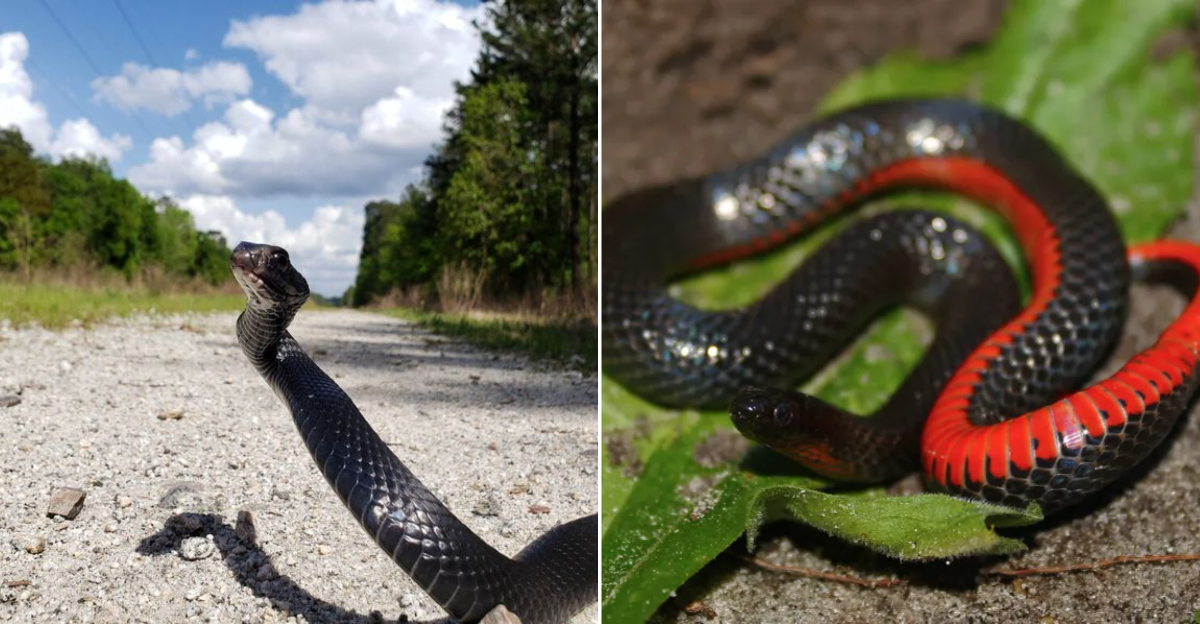If you’ve ever spotted a sleek black snake slithering through the grass in North Carolina, you’re not alone, and you might be surprised by how many look-alikes are out there.
Some are harmless helpers keeping rodents in check, while others deserve a little extra distance.
Whether you’re hiking, gardening, or just curious about what’s coiled up nearby, knowing who’s who in the snake world can be a real lifesaver.
Let’s untangle the mystery of these shadowy reptiles.
1. Black Racer (Coluber constrictor)
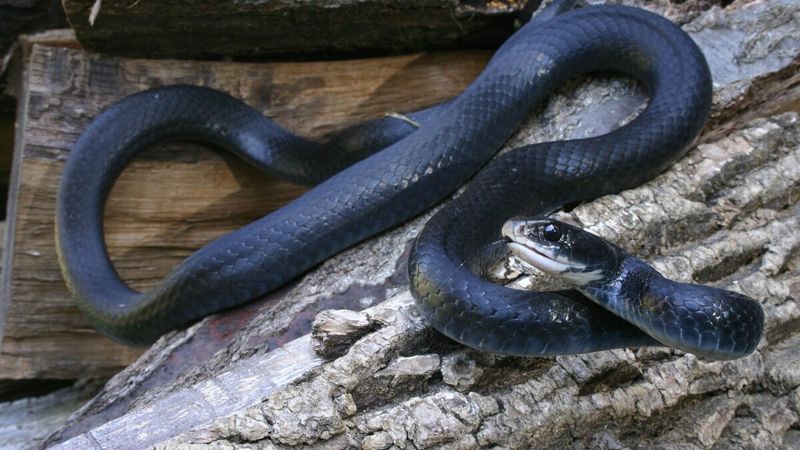
Zoom! That blur of black scales might be North Carolina’s speediest serpent. Black Racers can slither at an impressive 4 mph, outpacing most humans walking through the woods.
These non-venomous sprinters have sleek bodies, white chins, and large eyes that reflect their sharp vision.
Despite their intimidating speed and tendency to stand their ground when cornered, they’re beneficial predators that feast on rodents and other pesky critters.
2. Black Rat Snake (Pantherophis alleghaniensis)
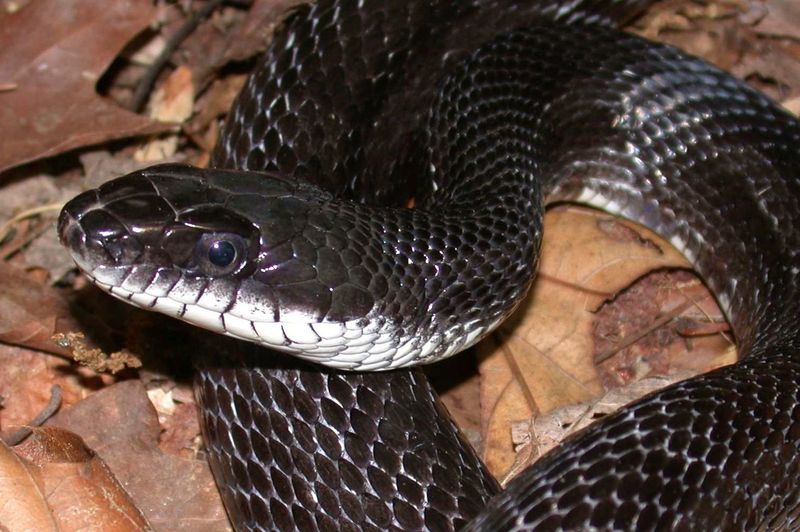
Gentle giants of the serpent world, Black Rat Snakes regularly reach six feet in length! These impressive constrictors sport shiny black scales with hints of white peeking through between them.
Masters of climbing, they’re often spotted scaling trees or exploring barns in search of their favorite meal—rats and mice.
Farmers consider these non-venomous snakes valuable allies in pest control, though their size can startle the unprepared hiker.
3. Eastern Coachwhip (Masticophis flagellum)
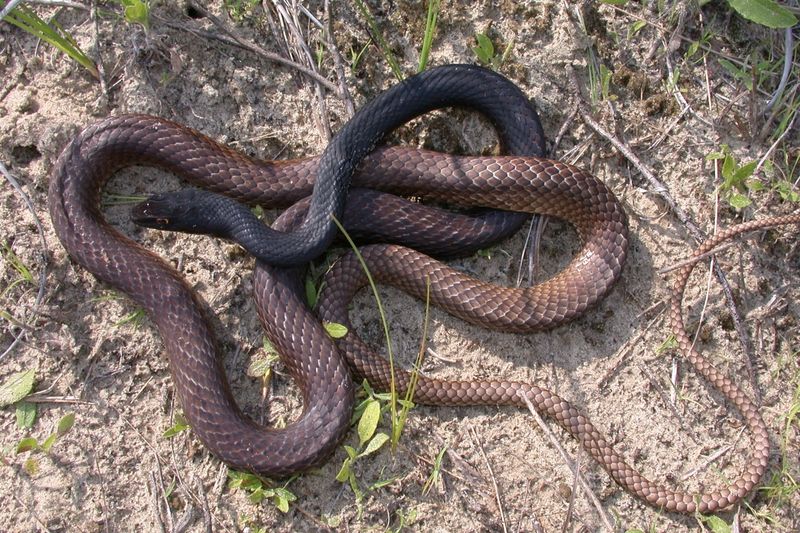
Resembling a braided leather whip, the Eastern Coachwhip features a gradient coloration—dark at the head, gradually lightening toward the tail.
These feisty characters won’t hesitate to defend themselves when cornered. Lightning-fast and inquisitive, Coachwhips often rise up to peer over tall grass, surveying their surroundings with remarkable awareness.
Though non-venomous, their aggressive defense tactics and painful bites have spawned myths about them whipping victims with their tails!
4. Black Swampsnake (Liodytes pygaea)
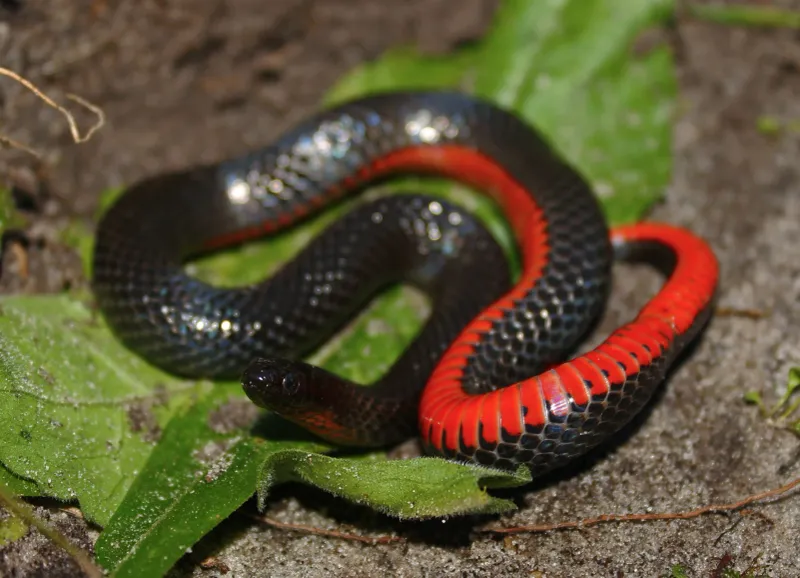
Tiny terrors of the wetlands! Black Swampsnakes rarely exceed 15 inches, making them the compact sports cars of North Carolina’s snake world.
Their glossy black backs contrast beautifully with vibrant red or orange bellies—a secret splash of color only visible when they’re flipped over.
These aquatic specialists spend most of their time hunting in shallow waters for worms, leeches, and small fish, rarely venturing onto dry land except after heavy rains.
5. Timber Rattlesnake (Crotalus h. horridus)
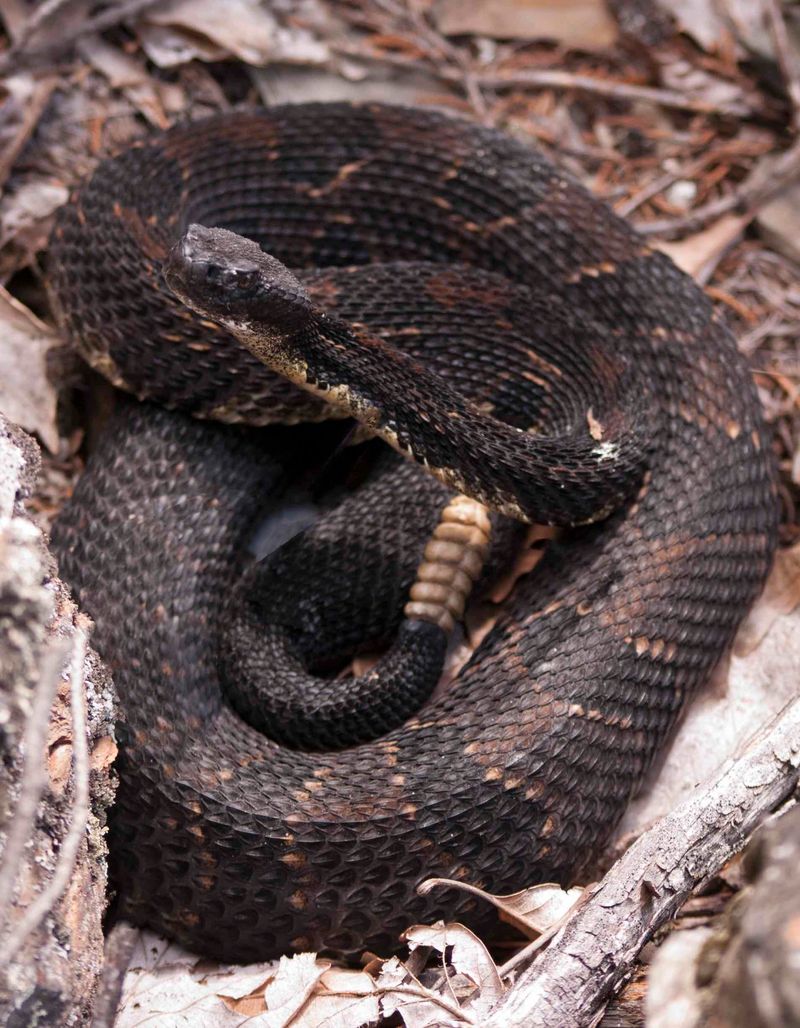
Respect the rattle! The Timber Rattlesnake’s dark phase displays a magnificent velvety black body accented with subtle brown crossbands and that infamous warning device on its tail.
Unlike its more aggressive cousins, this venomous beauty prefers avoidance over confrontation, typically rattling loudly before striking.
Mountain hikers occasionally encounter these endangered predators basking on rocky outcrops, where their masterful camouflage makes them nearly invisible until that distinctive buzz sounds.
6. Cottonmouth (Agkistrodon piscivorus)
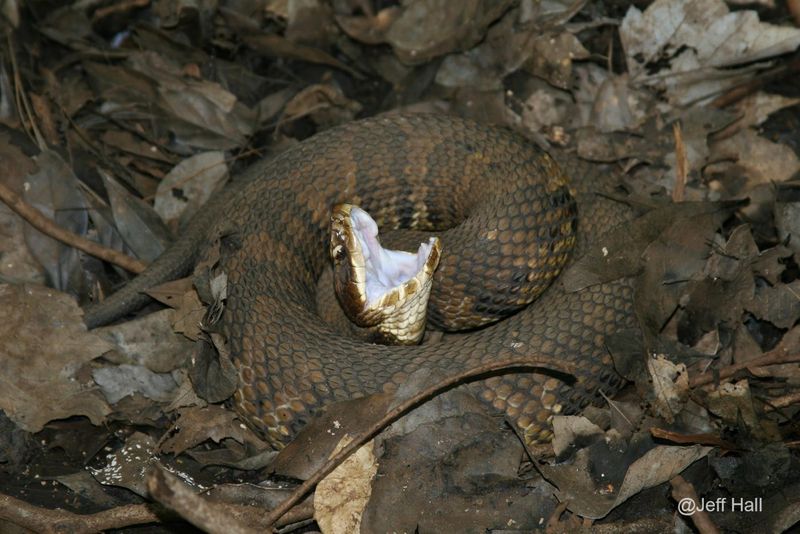
Say ‘ahhh’! When threatened, Cottonmouths display their namesake bright white mouth lining—nature’s most dramatic warning sign.
These hefty, venomous swimmers haunt the eastern swamps and waterways of North Carolina. Misidentification leads to countless needless snakes perishing, as harmless water snakes often take the blame.
True Cottonmouths have blocky heads, vertical pupils, and tend to stand their ground rather than flee when encountered, confidently showing off that startling cotton-white mouth.
7. Northern Black Racer (Coluber constrictor constrictor)
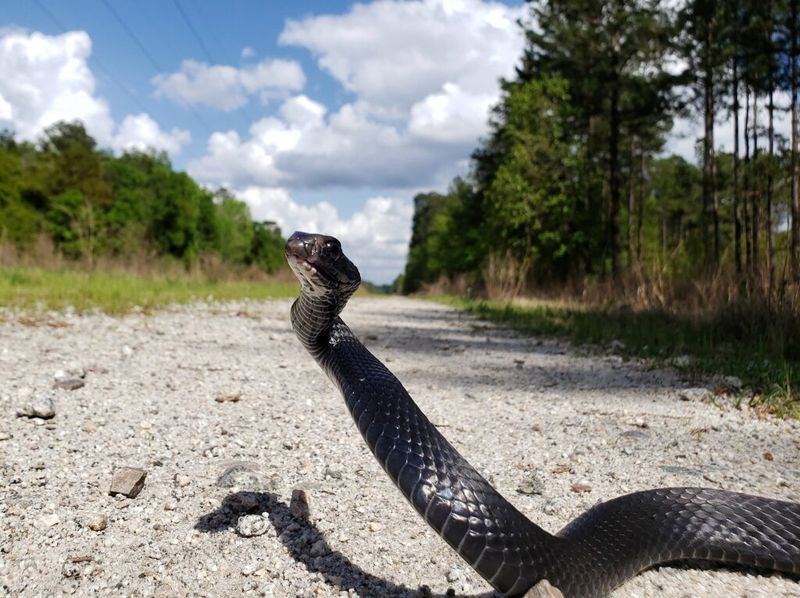
Morning joggers have nothing on these sprinters! The Northern Black Racer subspecies dominates the Piedmont region with its jet-black body and distinctive white chin patch.
Unlike their southern cousins, these racers prefer open woodlands and field edges where they hunt with their heads raised, scanning for movement.
Though quick to flee, they’ll vibrate their tails against dry leaves when cornered—a bluff that convincingly mimics a rattlesnake’s warning.
8. Southern Black Racer (Coluber constrictor priapus)
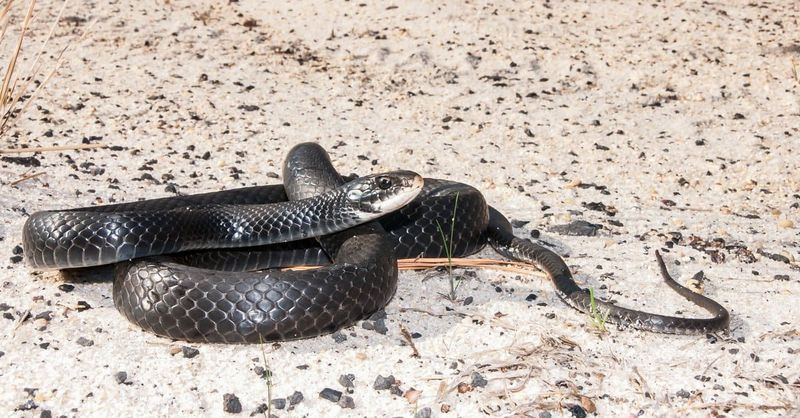
Beach lovers beware—these coastal speedsters rule the sandy landscapes of eastern North Carolina! Southern Black Racers feature more robust bodies than their northern relatives, with glossier scales that shimmer in the coastal sunshine.
Fearless hunters, they’ll chase down prey with remarkable determination, even pursuing lizards up trees and into shrubs.
Their diet includes numerous pest species, making them unsung heroes of the ecosystem despite their sometimes intimidating behavior when encountered by beachgoers.
9. Pine Snake (Pituophis melanoleucus)
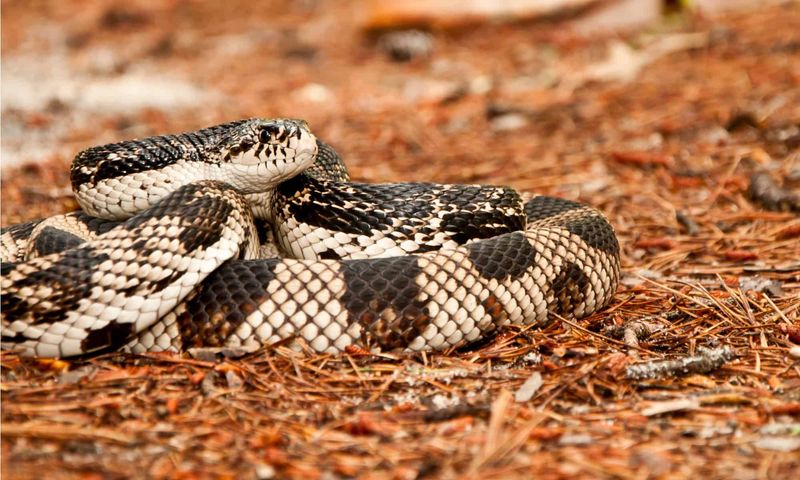
Drama queens of the serpent world! When threatened, Pine Snakes inflate their bodies, hiss loudly, and vibrate their tails—a theatrical performance worthy of Broadway.
These muscular constrictors sport a patchwork of black, white, and brown scales that provide perfect camouflage in their preferred sandy pine forest habitats.
Becoming increasingly rare due to habitat loss, these non-venomous diggers create elaborate underground tunnel systems and are considered a species of special concern in North Carolina.
10. Eastern Black Kingsnake (Lampropeltis nigra)
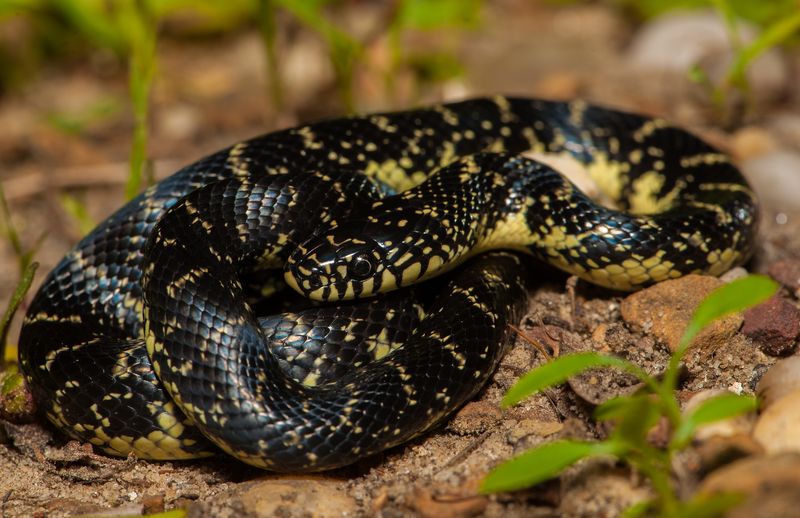
Crowned with a regal name that perfectly matches its dominance in the snake world, the Eastern Black Kingsnake commands respect throughout North Carolina’s diverse habitats.
This impressive reptile sports a glossy black body adorned with thin white or yellow chain-like patterns that give it an almost jewelry-like appearance in sunlight.
Fearless and powerful, these constrictors have earned their royal title by regularly dining on other snakes—including venomous species like copperheads and rattlesnakes!
